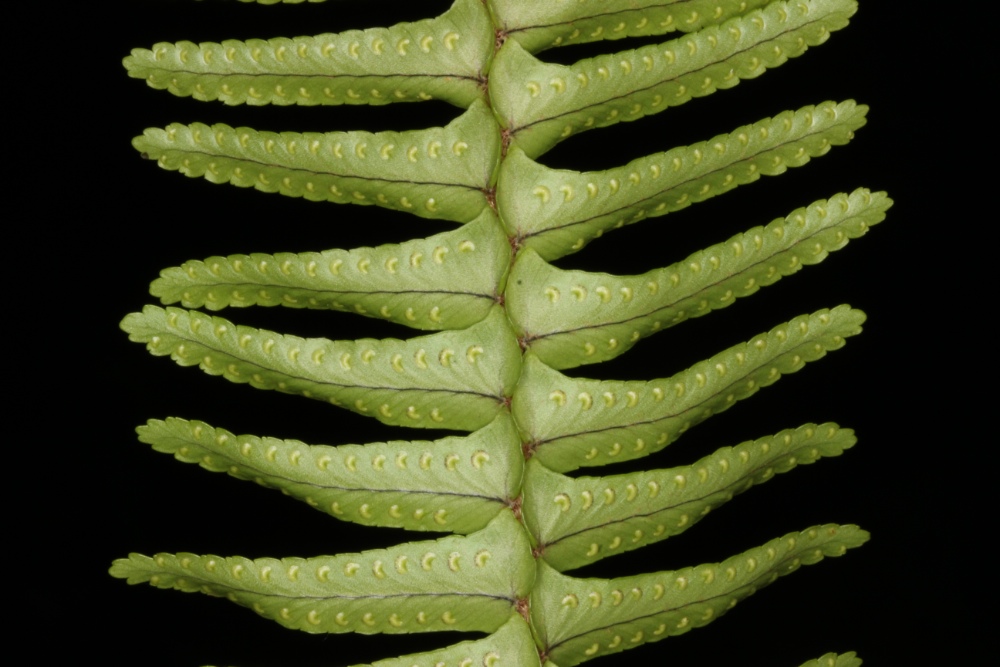In many areas of Florianópolis, this is one of the most common ferns found on stone walls. Does anyone know what species this is?
- Habit
- Pinnae
- Indusia and sori
- Rachis and hydathodes
- Apical pinnae
- Basal pinnae
- Plant base

In many areas of Florianópolis, this is one of the most common ferns found on stone walls. Does anyone know what species this is?

It looks like N. cordifolia (L.) C. Presl, but apparently there is some confusion with the name N. auriculata (L.) Trimen
see: Hovenkamp, P. H. and F. Miyamoto. 2005. A conspectus of the native and naturalized species of Nephrolepis (Nephrolepidaceae) in the world. Blumea 50: 279–322.
I have the pdf of this paper; email me if you want a copy.
Thanks. I will email you about the paper.
I agree with Tom: This looks like Nephrolepis cordifolia. If you have a chance, check for the presence of tubers on the underground runners of these plants to confirm the id. These structures, which are irregularly globose to somewhat elongated, up to a few cm in diameter, and densely scaly, are often (but not always) present in this species.
The tubers are really interesting. They do not store water not starch.
When growing in soil they can produce the tubers; but when growing epiphytically or epipetrically (at least here in Hawaii) they do not produce the tubers.
Once I noticed in a plant that had been potted and kept dry for a prolonged period, that the tubers had all disappeared and left holes in the soil. Did anyone ever test for starch, though?
Peter, I did a test for starch using potassium idodide and did not see a reaction. This was a bit surprising since the rhizome does not seem to hold much starch either.